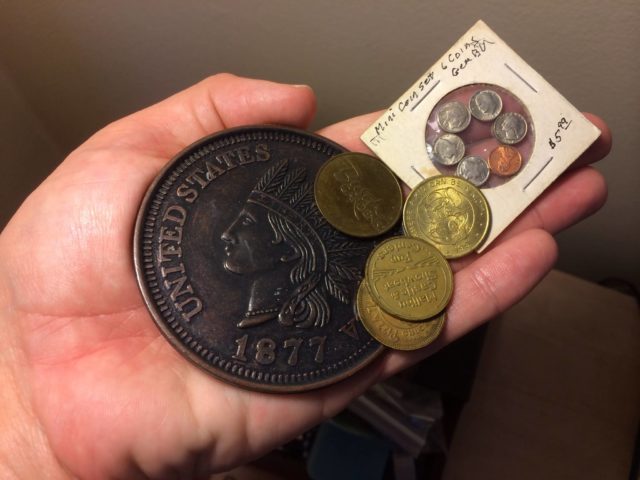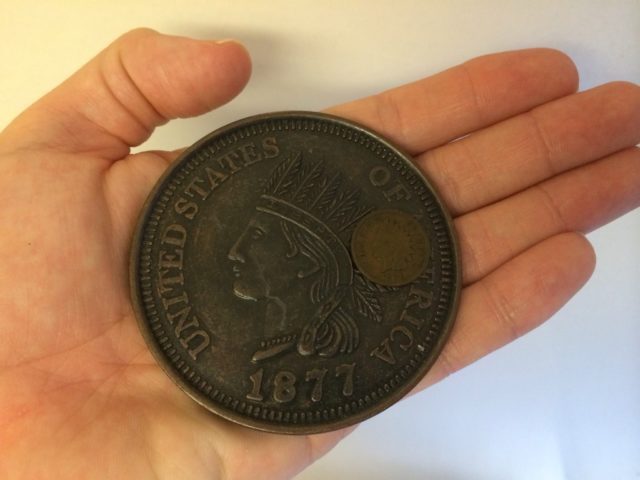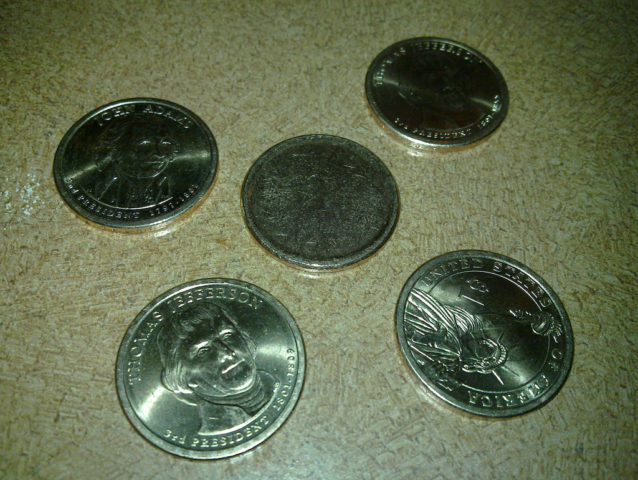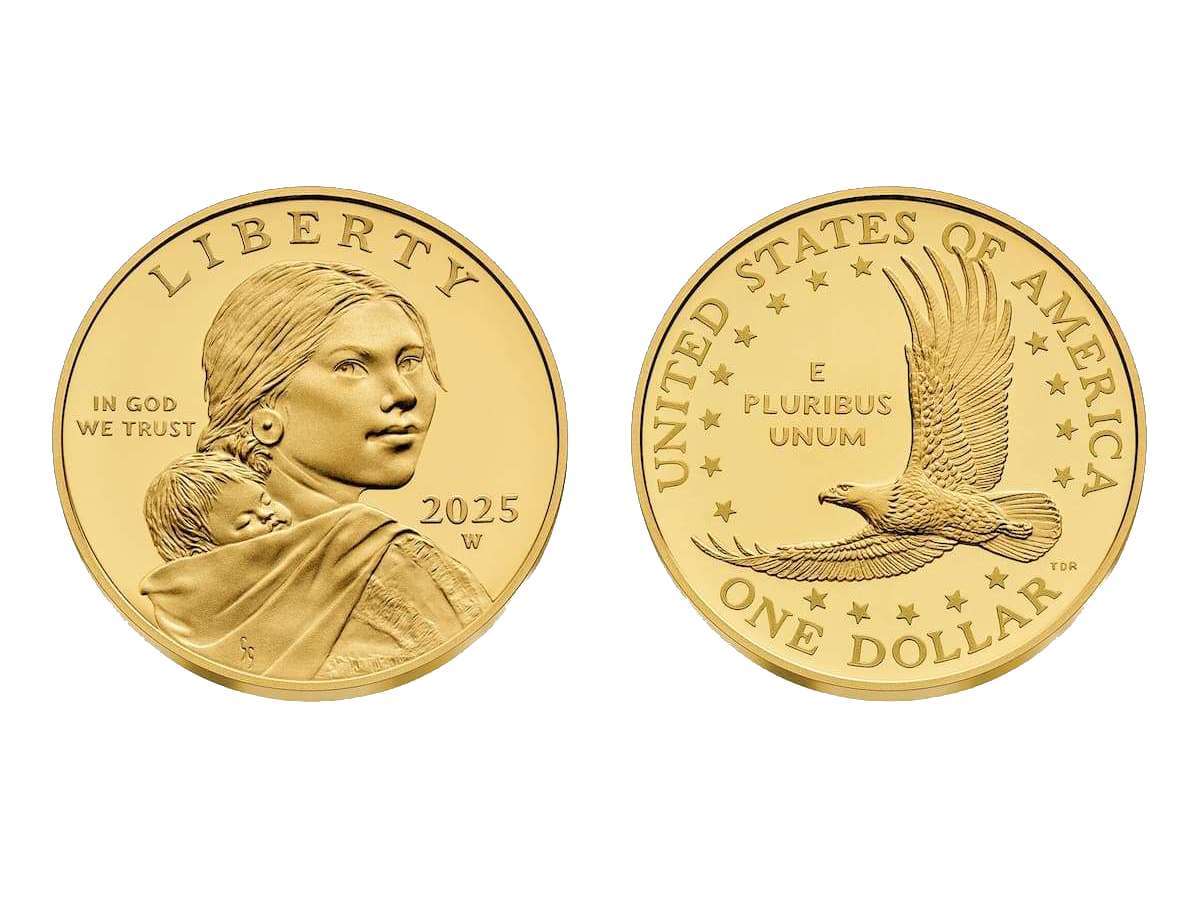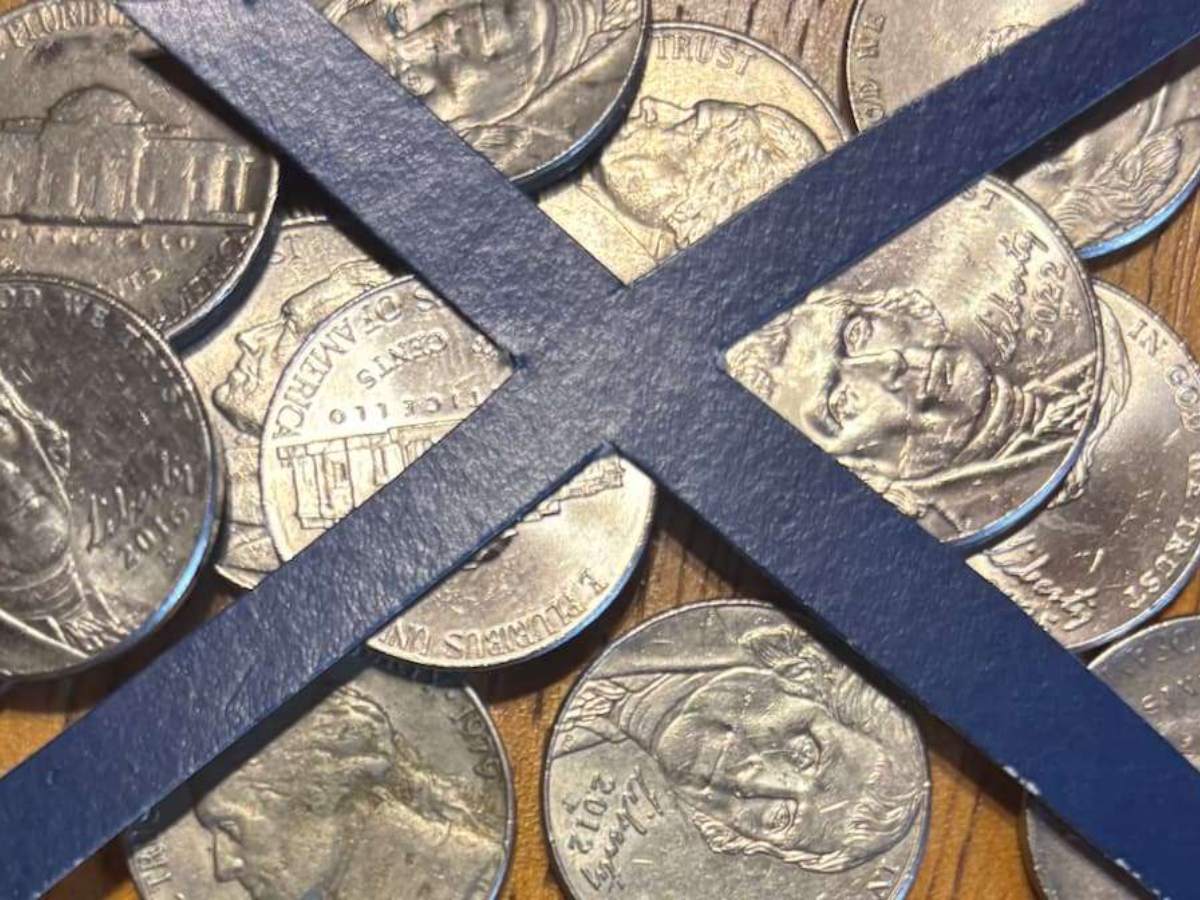Unusual looking coins definitely raise a lot of eyebrows. They also raise a lot of questions.
With regard to strange coins, these are the 3 types of questions I get the most:
- I’ve gotten a lot of questions from people asking about old tokens they’ve found.
- I also get asked about big coins, tiny coins, and other things that look like coins but aren’t legal tender.
- Several people want to know what’s up with coins that are blank on one side and two-headed coins.
Are these odd coins even real?
Most of the coins I’ll talk about in this post fall into the category of exonumia — things that are related to coins but aren’t necessarily real, legal tender coinage.
Some of the coins I’ll talk about here are novelty coins — pieces that are or once were legal tender coins but have since been altered into some other type of coin oddity.
Okay, here are answers to the most common questions I get about strange coins that look real…
Token Coins
“Why does my coin have a picture of Chuck E. Cheese on it?”
Ah, yes… tokens.
While I’m not a token collector per se, I do have several neat old tokens, and these pieces are pretty neat to people who love nostalgia, retail history, or want to take a trip back to an earlier era of the tourism industry.
As recently as the 1990s, it was common for restaurants, grocery stores, theme parks — you name it — to hand out souvenir token coins. Often, these tokens could be redeemed for special offers — like a free meal, free admission, or something like that.
Even places like Chuck E. Cheese used to have tokens that you could use to play arcade games.
Many of these old tokens are collectible and are worth $1 to $5.
Rare tokens, such as those that were used during the Civil War era, are worth hundreds of dollars.
Big Coins
“I have a large Indian Head penny. Is it rare? What’s it worth?”
I’ve gotten this specific question more than a few times over the years. I actually own one of these replica coins, and I bought it for $4 at an old-timey tourist gift shop in Florida.
Large coins like this are neat-looking replicas, but that’s all they are. They’re not legal tender in any way.
Most of these big coins are made from base metals and aren’t typically worth more than $3 to $5.
Big coins come in many different designs. I’ve personally seen the following:
- Large Lincoln pennies
- Large Buffalo nickels
- Large Jefferson nickels
- Large Mercury dimes
- Large Roosevelt dimes
- Large Washington quarters
- Large Walking Liberty half dollars
- Large Franklin half dollars
- Large Kennedy half dollars
- Large Morgan silver dollars
- Large Peace silver dollars
- Large Eisenhower dollars
While none of these big coins are rare or valuable, they make great conversation pieces and look cool on the mantle.
Tiny Coins
“I have a tiny Kennedy half dollar. What’s it worth?”
On the opposite end of the spectrum are tiny coins that look like the real thing but are only a fraction of the size of their regular coin counterparts.
I’ve seen all types of tiny coins including:
- Small Lincoln pennies
- Small Buffalo nickels
- Small Mercury dimes
- Small Washington quarters
- Small Kennedy half dollars
- Small Eisenhower dollars
None of these were made at the United States Mint.
In fact, they’re tiny novelty coins. Some of them were made for doll play sets. Some are play money.
But those realistic-looking, mini coins that you may have are small novelty coins that are 100% true to the original coins they replicate — they’re just a fraction of the size!
I bought a few of these tiny coins just for the fun of owning some. They’re worth 50 cents to $1 apiece, and while they’re not rare (and certainly aren’t legal tender), they’re still pretty awesome to hold in the hand.
Two-Headed Coins (Or Coins With Two “Tails” Sides)
“Why does my nickel have Jefferson on both sides? What’s this two-headed coin worth?”
I always hate breaking the news to people that these coins aren’t valuable and, technically, they aren’t even legal tender.
These two-headed (or double tails) coins are usually fantasy pieces that were made by hollowing out the side of one coin right up to the rim and meticulously (and snugly) fitting another coin inside the shell.
Normally, two-headed coins are made for illusionists or people who want to win bar bets.
Exonumia coins like this are worth anywhere from 25 cents to a few dollars as novelty coins. But they aren’t rare, and you don’t want to try spending any as real money!
Coins That Are Blank On One Side
“My Lincoln penny is blank on one side. Why is this? How rare is it?”
Surely, coins that are blank on one side look pretty unusual. But in most cases they aren’t rare or valuable.
However, modern minting techniques make it virtually impossible to strike a coin that looks perfect on one side and completely blank on the other.
NOTE: There are some real error coins that look weak or somewhat mutilated on one side. Different types of error coins like this exist, and based on the origin of the error are worth between $5 and $100 (or more).
Normally, when people ask me questions about coins that are blank on one side, the photo I end up seeing is a coin that looks normal on one side but has tiny grooves or striations on the “blank” side. That typically means somebody sanded away or sheared off the other side and later polished it to look like the coin was really struck only on one side.
Blank coins are real coins that have been terribly mutilated to look like unusual one-sided coins. Often, they’re produced for illusionists or people fascinated with fantasy coins or other exonumia oddities.
For the most part, these one-sided coins may be neat to look at, but have no monetary value in the general coin collector market.
Colorized Coins
“My American Silver Eagle is painted red, white, and blue. What’s it worth?”
Colorized coins are real coins that have been altered outside of the U.S. Mint.
Some private mints will colorize regular Washington quarters, American Silver Eagle coins, or other pieces and sell them as special novelty coins. While these painted coins are often beautiful works of coin art, they are not rare and aren’t valuable.
In numismatic terms, colored coins are usually worth only whatever the intrinsic metal content of the coin itself is worth.
For American Silver Eagles, which are one of the most common types of colorized coins, the value is whatever an ounce of silver is worth.
Must read: Answers To Your Top 3 Questions About Pennies – Wheat Pennies, Silver Pennies & Gold Pennies
As always, feel free to post any photos of unusual coins, tokens, or other money-related items you may have and I’ll be glad to take a look and answer any questions you may have.
Happy collecting!
Other Types Of Strange Coins
- Lincoln-Kennedy Pennies
- Re-Engraved Cents
- What Are Doubled Die Coins?
- 5 Unusual Coins Worth Collecting
- Odd, Scarce & Collectible: The 20-Cent Coin
- Coin Jewelry & Using Coins As Art
If you collect or invest in American Silver Eagles, you might enjoy my latest book –
A Guide Book of American Silver Eagles
(Whitman Publishing).


